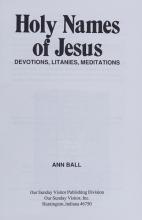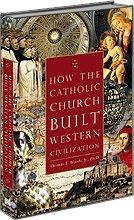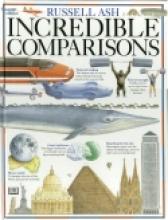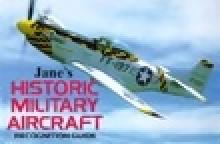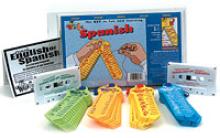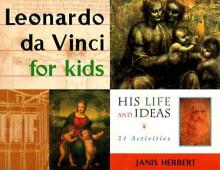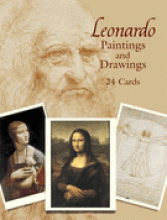General Resource
History Links: Unit Six – Ancient Greece
This unit on Ancient Greece is not a structured, day-to-day lesson plan. Rather, it is organized to guide you to develop your own daily plans and longer term assignments. The book begins with traditional Catholic prayers and patriotic hymns derived from Greek that can be learned during the unit and used for memorization, dictation, copywork or spelling. Next is a lengthy list of topics that will be studied and a listing of specific books, church documents, videos, and internet sites. These lists will help you to gather materials for your students to use during the study of Ancient Greece. The "preparation" section ends with vocabulary and spelling lists and a timeline.
The bulk of the unit is organized in outline style, with many, many suggestions of things to do as you explore Ancient Greece. Each of the topic headings and activity suggestions includes background teaching information, which I think is one of the best features of the program. The activity suggestions are coded with an age recommendation and a subject classification. For example, some activities are best-suited for preschoolers or elementary students, while others are best for middle school students or high school students. Each page also includes ideas for including babies and toddlers in the activities! Main subjects covered include religion, language arts, literature, research skills, critical thinking, and geography. Some suggestions also include study in foreign language, math, science, citizenship, architecture, art, crafts, drama, music, and physical education.
The authors recommend spending approximately 2 months on this unit, but there are so many things to do that you could easily spend much longer on this time period. I think that these courses are wonderful all by themselves, but they would also be very useful as a supplement. If you are enrolled with a formal curriculum such as that of Kolbe Academy or the Angelicum Academy, you could use History Links to add some fun projects and a Catholic perspective to the courses. History Links really are family-centered education, making learning fun and memorable.
Hold That Thought: History Volumes 1 and 2
Each CD-ROM contains hundreds of files in pdf format that can be easily printed at home on either a PC or a MAC, demanding no flash trips to the copy shop or weeks of pre-planning. Volume 1 covers the highlights of world history from ancient times through the period of European exploration in over 350 worksheets. Volume 2 begins with European exploration, continues with United States history, and concludes with modern world history in over 600 worksheets. Don't be misled by the term "worksheet". These are not fill-in-the-blank worksheets, but more like "picture pages" that include a picture that can be colored as well as lines for the student's writing. Pages feature important biographical characters, events, geographical regions, and even architectural achievements; the range of Who? What? Where? and When? are available. Detailed content lists are available at the publisher's website.
In addition to these picture pages, the CD-ROMs contain many special features. I especially like the "first draft" sheets that are available to help more inexperienced writers with identifying important information that should appear in their reports. One of my boys loves the newspaper-reporter style of some of the historical event worksheets. Suggestions for extension activities and coloring pages are included for some events, and outline maps are another convenience.
Because the contents are extensively indexed and cross-referenced alphabetically and by date, these CD-ROMs can be used equally well by families who prefer textbooks to those who prefer a "living books" approach to those who utilize unit studies. Our family uses the IEW writing method (reviewed elsewhere) with a classical approach to history, and we have found a seamless mesh using these worksheets. Unlike materials that contain preprinted text, there are no interpretations of historical details that require editing or quibbles to reflect our beautiful Catholic faith. The producers of these materials are Christian, and significant religious figures have been included. However, don't expect to find all of the Popes or lesser-known Catholics; more generic pages can be used for these people.
These CD-ROMs make notebooking a pleasure and provide a concrete way to summarize a child's study, using his or her own words and work. The pages can be used to make special topical notebooks, added to a Charlotte Mason-inspired Book of Time, used to enhance daily work or formal assignments, or even included in an annual portfolio. I can also imagine using the sheets in 4-H reporting projects, Scouting reports and merit badge work, co-op classes, or even using the pictures to make posters. The liberal copyright allows the contents to be used by the purchaser's own immediate family or for any class that the purchaser teaches, so long as no money is charged for them. Finally, I must note that the customer service that I received was exceptional. My order was received very, very quickly, and a minor problem was straightened out immediately and far more generously than I have experienced before. All things considered, Hold That Thought's History Volumes 1 and 2 are our family's "top pick" of new materials for this school year.
Holy Names of Jesus: Devotions, Litanies, and Meditations
Did you know that Jesus is also known as "Divine Mercy" and "The Incarnate Word"? OK, those were easy ones. Do you know the story of the "Infant Jesus of Prague" or "The Black Christ of Esquipulas"? Mrs. Ball has written an interesting book describing the numerous names by which Our Lord has been known throughout time and throughout the world. The earliest names, of course, come from the Bible, but many of the others have been made known through the writings of the saints, visions, and documented miracles. Others are simply devotional. She says that her goal is "that a study of some of His holy names will call forth a greater love of Him Who is Love" (p. 9). In addition to the main text, Mrs. Ball includes the Litany of the Most Holy Name of Jesus, a lovely prayer, as well as an extensive bibliography.
This book is laid out in short sections that may be read in a few minutes while providing food for thought for hours. Forty-four names by which Jesus is known have been listed and described, with a short prayer or meditation after many of them. Those names whose origin is well-known have longer passages than those names that are less familiar. I must admit that two of the passages struck me as a bit odd: the one titled "Cosmic Christ–-Jesus, Priest" which is a modern piece of poetry and the one titled "Jesus, Our Mother", which is a commentary of the universal natures of Christ. Both seemed out of place and less than reverent, but the book has both the "nihil obstat" and an imprimatur. Most of the remaining names were familiar to me and quite traditional.
Imprimatur and Nihil Obstat
How the Catholic Church Built Western Civilization
Incredible Comparisons
This picture book designed for "big kids" gives side-by-side comparisons according to length, height, area, life-span, speed, etc. of all kinds of things - animals, mountains, countries, modes of transportation, man-made structures and much more.
Segments of the book include: "On the Surface" (compares land-size of various countries, islands, different uses of land), "Into the Earth" (canyon depths, cave lengths and depths, etc.), "Going into Space" (compares power and speeds of rockets vs. airplanes, comet tail size comparison with various planets, etc.), "The Solar System" (compares planet sizes and distances, etc.), "Great Lengths" (compares lenghts of airplanes, highways, major rivers, telecommunications cables, etc.). Other chapters cover animal speeds, ladn and water speeds, human population etc. Does include some environmental and politically correct content. The segment on human population was much better than I expected. To give a sampling.... "A population explosion has seen the number of people in the world more than triple since 1900 - from less than 2,000,000,000 to close to 6,000,000,000. Each day, enough people to fill the largest stadium in the modern world are added to the total. Thankfully, the world is a very big place. All the people in the world today could actually fit, standing shoulder to shoulder, on the small Indonesian island of Bali."
Jane's Historic Military Aircraft: Recognition Guide
I searched for such a guide unsuccessfully for a year or more before I happened to visit the Smithsonian National Air and Space Museum in Washington D.C. where I came upon this little gem in the gift shop.
This 5" x 7 1/2" guidebook has a friendly size and tough binding for little hands. (We've had ours for over two years and it has held up very nicely.) It organizes the aircraft into five categories: World War I, Inter-War, World War II, Postwar and Helicopters. The categories are easy to find with color bars alongside each left-hand page. The book was written in the U.K. and thus does not focus on various smaller wars since World War II, but the "Postwar" and "Helicopter" segments do include some information about the Korean and Vietnam Wars. Also keep in mind that this is a guidebook for "Historic" Aircraft and thus does not include aircraft that is in use by military today.
Each two page spread includes a fact page on the lefthand side and a full-color photo of a restored or replica airplane that is in flying condition. The fact page includes a paragraph explaining the aircraft's history and features along with detailed specifications: name, type, accomodation, dimensions, weight, speed, range, first flight date, etc.
The book is a little expensive (around $25) and not an absolutely essential ingredient in the study of history, but we've found it to be a really nice supplement. It might make a great Christmas or Birthday present for your young World War II buff.
Learning Wrap-Ups: Spanish Introductory Kit
Our family has been enjoying Learning Wrap-Ups in a variety of subjects to drill and practice basic concepts. Each set consists of ten key-shaped plastic flash cards attached at a pivot-point with a string to wrap back and forth from question to answer. After finishing each key, simply look at the back to be sure the string matches up with the self-correcting answer key. I love how my children can study independently with these sets AND they can be used over and over again. They are sturdier and more self-contained than ordinary flash-cards (and don't get lost under the couches!). Learning Wrap-Ups may be purchased one set at a time or in money-saving multi-set kits.
The Spanish Introductory Kit includes four flashcard sets:
Learning Words: Each of these cards involves matching pictures to Spanish words. Subjects covered are: parts of the body, school words, clothing, food, animals, family members, household objects, outdoors and transportation.
Talking Basics: Match numerals, symbols and pictures to Spanish words. Some are in the format of simple fill-in-the-blank sentences. Subjects covered: counting, months of the year, action words, miscellaneous objects, more parts of the body, opposites, directional words, holidays and week days, and telling time.
Making Statements: This set uses simple fill-in-the-blank sentences to practice vocabulary in the following subject areas: fruit, things you can read about (also practices plural endings), miscellaneous objects (while practicing using "an" before vowel words and using "a" before consonant words"), things we wear, objects in a living room, more action words, money and stating a need.
Asking Questions: Topics include: Observing zoo animals, tools and equipment, occupations, places, science class materials, vegetables, miscellaneous nouns, bathroom items, kitchen items, and shopping.
The pocket-sized 31 page booklet provides the English translations for each of the Learning Wrap-Ups (the Wrap-Ups themselves do not use any English). We've found this to be a great place to start studying (particularly when I'm doing things with my children in a group). My children line up and enjoy acting out the Spanish words while they're learning them. The booklet is really handy for oral quizzing as well. The children go back to the Learning Wrap-Ups for independent study. The set also includes two audio tapes. (We haven't really used these yet as we tend to do our oral work together. I'm sure it will be handy for further independent study at some point.)
Kit includes: 4 sets of plastic flash cards, one teaching booklet and two audio tapes
This product was donated for review by Learning Wrap-Ups Inc.
Leonardo da Vinci for Kids: His Life and Ideas
Leonardo da Vinci has long been considered the paradigm "Renaissance Man". Through this book, he offers children a great example of enthusiastic love of life and learning. Readers will come away with a greater perspective on and respect for many important ideas: the importance and joy of learning, early advancements in science, general concepts of art and how to appreciate it, basic scientific concepts, ideas for using the imagination and memory, concepts in math relating to science, Renaissance life and much more.
I was impressed with the care the author took in relating so many interesting ideas in an accessible and engaging manner. I found difficult concepts handled graciously and respectfully - particularly for the intended age level. For example, the reader will learn that da Vinci's parents were never married and that this had consequences on his career choices. We learn that da Vinci dissected dead bodies at the morgue for the sake of artistic and scientific learning. At one point the Pope prohibits him from continuing this mode of study. Instead of being judgemental about these sorts of issues or dwelling on them inappropriately, they are explained in clear, simple terms as relevant parts of the story, but without any extra nonsense.
This would make an excellent "spine" text for a study of the Renaissance. In addition to the text and side bars, there are 21 activities relating in various ways to da Vinci's life. They span a wide range: baking, drawing, math, science, painting, observing, language and more. The book is best for independent reading in 6th grade and up. It could be read-aloud to younger children. Most of the activities are suitable for any school-age children.
Enthusiastically recommended!
Donated for review by Chicago Review Press
Leonardo Paintings and Drawings: 24 Cards
24 Postcards in perforated book
Most homeschoolers are familiar with the Montessori-style idea of having children learn to enjoy and appreciate great paintings by studying small post-card size reproductions (especially as promoted by Aline Wolf in Mommy It's a Renoir). This is a very nice program, as I understand it, but I've been frustrated with the lack of beautiful painting collections in postcard size. You can find them here and there at museums, but they have been very difficult to purchase on the web or from catalog. Dover Publications is beginning to fill that gap with some beautiful postcard collections, but Leonardo is my favorite so far.
The set includes 13 reproductions of paintings: Madonna with the Carnation (1475), The Virgin and Child with St. Anne (1508), Bacchus (circa 1513), Portrait of Ginerva de'Benci (circa 1478), The Last Supper - detail (1495-1497), The Benois Madonna (circa 1478), The Annunciation - detail (circa 1472), St. John the Baptist (circa 1513-1516), Portrait of Cecilia Gallerani a.k.a. Lady with an Ermine (circa 1490), Madonna of the Yarnwinder (1501), Madonna Litta (circa 1490), Mona Lisa (1503-1506), and Portrait of a Musician (circa 1490).
There are 11 beautiful drawings as well: The Virgin and Child with St. Anne, Profile of a Young Woman, Antique Warrior, Self-Portrait, Five Grotesque Heads, The Virgin of the Rocks, Vitruvian Man, Study for the Last Supper and Architectural Sketches, Old Man and Youth, Study for the Battle of Anghiari and Feminine Headdress.
This is a great and inexpensive way to introduce children to really great art. Also would make a nice supplement to Leonardo da Vinci for Kids.


